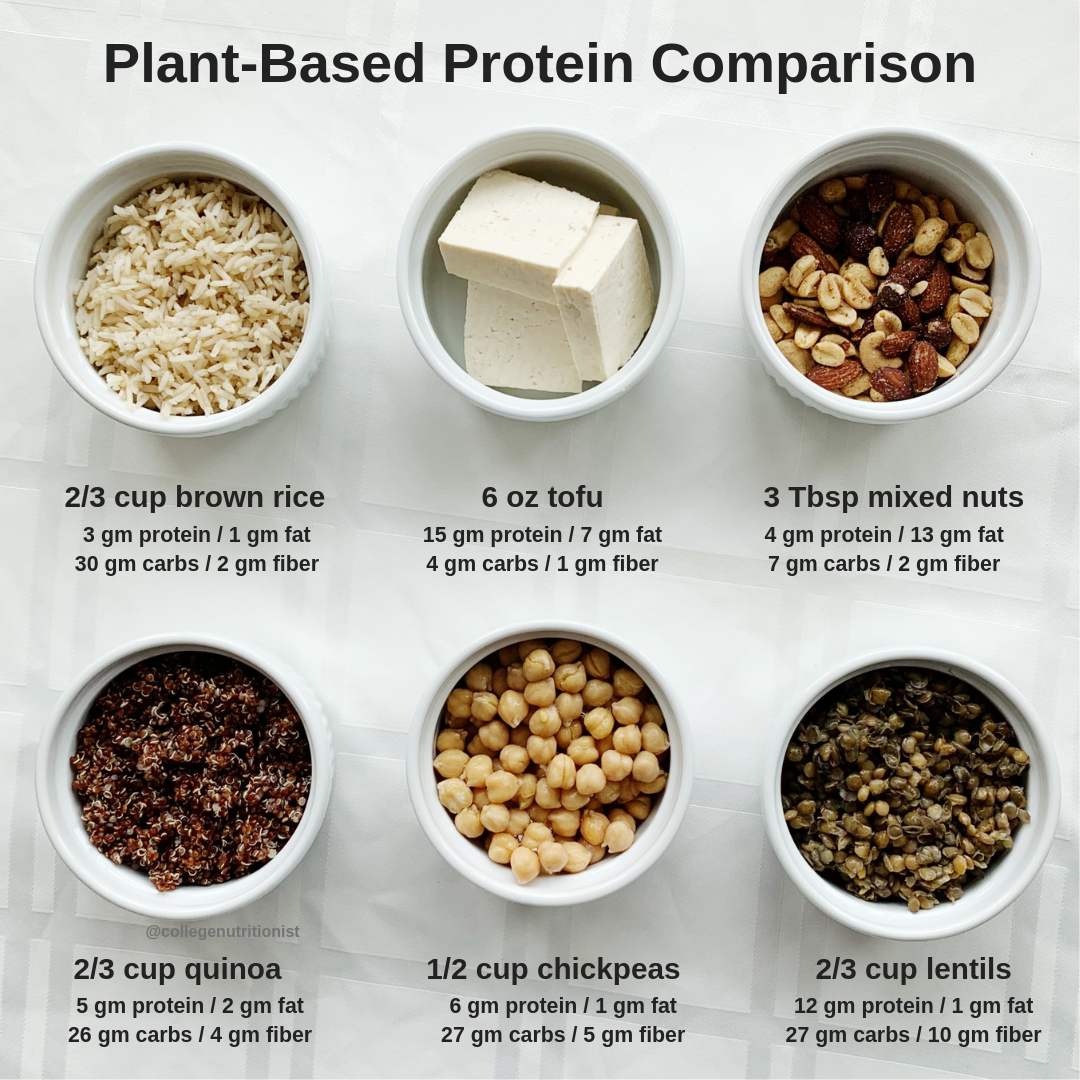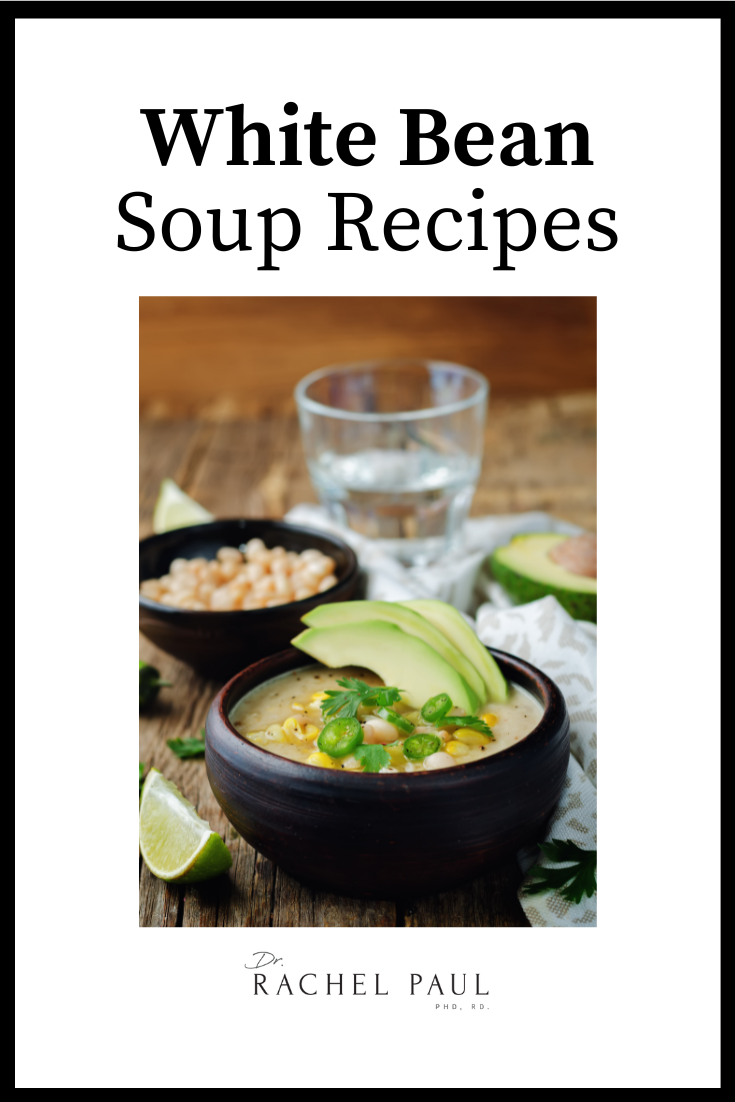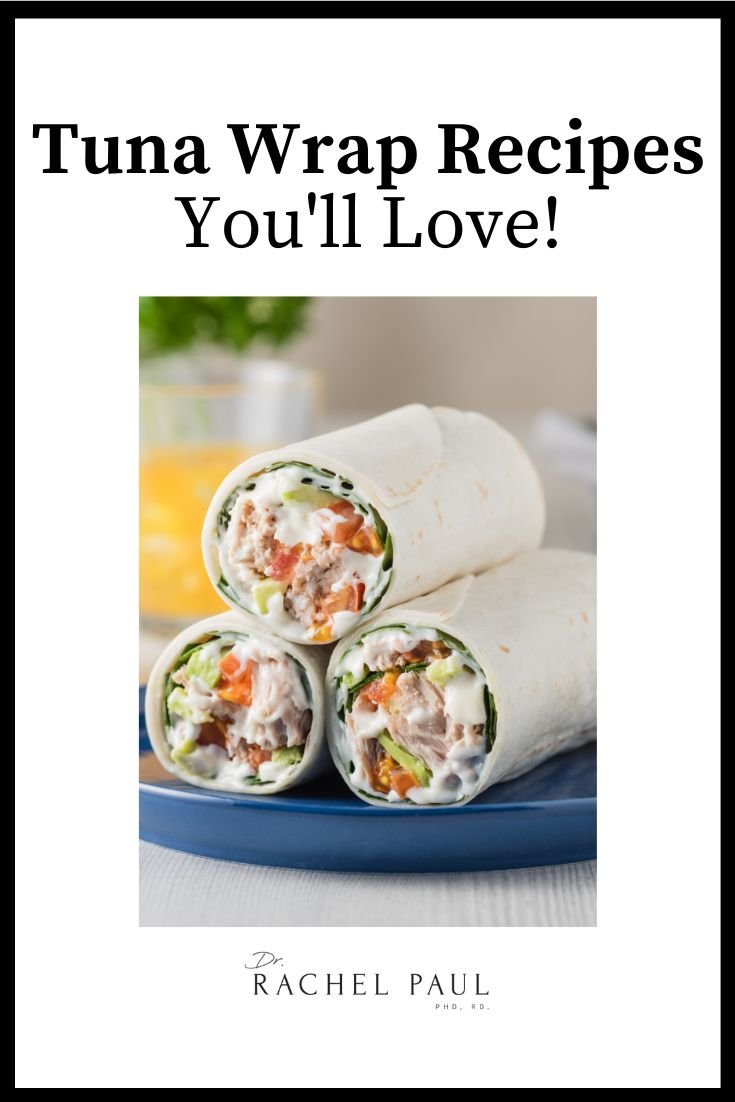First of all, all proteins are healthy and yummy. Getting a variety of protein sources in your diet ensures that you will get a range of nutrition benefits! AND foods high in protein are very filling – they will often keep you full for hours! I know that a high protein meal can help curb my desire for snacks in between meals.
However! It is fun to see which sources contain the most protein – these are all based on about 150 calories – so that, if you’re watching calories, you can get the most bang for your buck. You’ll soon see that not all proteins are created equal.
I also list fiber amounts here, since fiber is also filling. But, I have found through my years of coaching, that foods higher in protein, even sacrificing fiber, are more filling for many people compared to plant-based proteins higher in fiber. Just some food for thought 🙂
Also! What is very important to note, is that not all proteins contain all of the essential amino acids we need to keep up our muscle mass.
All animal proteins contain all the essential amino acids (they’re called “complete proteins”), but the majority of plant-based proteins only contain some amino acids (they’re called “incomplete proteins”). So when you’re eating plant-based proteins you want to ensure you’re consuming a variety of different versions so that you are still eating all of the essential amino acids. You can get them all from plant based sources, but just not in one food.
I’ve broken down the various protein sources in two different ways. Firstly, the equivalent of 150 calories. If you’re watching your weight, you’ll often have an overall target of how many calories you will be eating in any given day. When you’re building out a plan of what you want to eat for the day, you’ll be able to see how much of any given protein source you can eat and keep it within a reasonable calorie range. You can then see how much protein you’ll actually be getting from that source. For example, if you’re going to consume 150 calories of cooked brown rice versus 150 calories of salmon the difference in protein amounts is quite big.
The other way you can look at your diet is to set goals for certain macronutrients. You may have a set amount of protein you want to eat on any given day. At the end of this post you’ll see how much of a certain protein you’d need to eat to get that amount, compared to a different protein source. This is eye opening for a lot of vegetarian and vegan clients as they see how much of the “high protein” plant based sources they need to consume to get the same amount of protein in if they were consuming animal products.
This isn’t to say eating either way is better or worse. Taste, preference, cost and availability of food all play a role in what we choose to eat. I hope that with this information you’ll be able to reach your health goals faster than ever before.
Remember! These are all 150 calorie equivalents
2 Eggs
-
Protein: 13 gm
-
Fat: 11 gm
-
Carbs: 0 gm (0 gm fiber)
7 oz 2% Greek Yogurt
-
Protein: 20 gm
-
Fat: 5 gm
-
Carbs: 8 gm (0 gm fiber)
4.5 oz raw Chicken
-
Protein: 29 gm
-
Fat: 3 gm
-
Carbs: 0 gm (0 gm fiber)
3 oz Raw Salmon
-
Protein: 17 gm
-
Fat: 9 gm
-
Carbs: 0 gm (0 gm fiber)
1.3 oz Cheese
-
Protein: 10 gm
-
Fat: 12 gm
-
Carbs: 1 gm (0 gm fiber)
2 oz Raw Beef
-
Protein: 15 gm
-
Fat: 10 gm
-
Carbs: 0 gm (0 gm fiber)
Remember! These are all 150 calorie equivalents
2/3 cup Cooked Brown Rice
-
Protein: 3 gm
-
Fat: 1 gm
-
Carbs: 30 gm (2 gm fiber)
6 oz Tofu
-
Protein: 15 gm
-
Fat: 7 gm
-
Carbs: 4 gm (1 gm fiber)
3 Tbsp Mixed Nuts
-
Protein: 4 gm
-
Fat: 13 gm
-
Carbs: 7 gm (2 gm fiber)
2/3 Cup Cooked Quinoa
-
Protein: 5 gm
-
Fat: 2 gm
-
Carbs: 26 gm (4 gm fiber)
1/2 Cup Cooked Chickpeas
-
Protein: 6 gm
-
Fat: 1 gm
-
Carbs: 27 gm (5 gm fiber)
2/3 Cup Cooked Lentils
-
Protein: 12 gm
-
Fat: 1 gm
-
Carbs: 27 gm (10 gm fiber)
Here’s another way to look at it
Again, different food types have different amounts of protein. Animal proteins often have more than plant-based. A variety of factors will help you determine which proteins are right for you to be eating. Whatever you choose to eat, make sure you’re getting a variety of colors, flavors and protein sources to get a well-balanced variety of nutrients.
AND!
For some of us, all this calorie or macronutrient counting is too much. We get bogged down in all the details and end up throwing the whole thing out the window. That’s why I’ve created my weight loss program. For people who know they want to eat a more nutritious diet but don’t know where to start. Or know what they should be eating but don’t know how to put it into practice, in real life.
If you are looking for the EASIEST and most realistic weight loss program – that works for the LONG term (it incorporates weekly meal plans, how to stop stress & boredom eating, AND an accountability group) – check out my program here: mealplans.collegenutritionist.com










